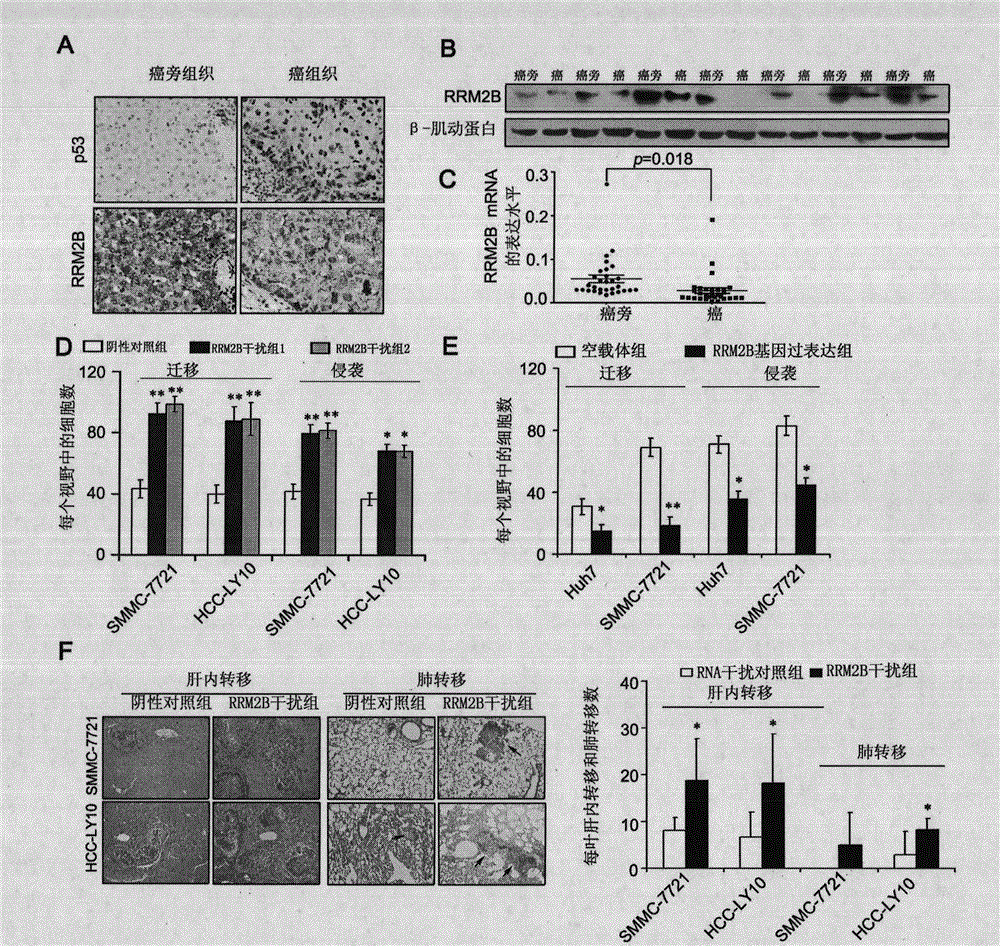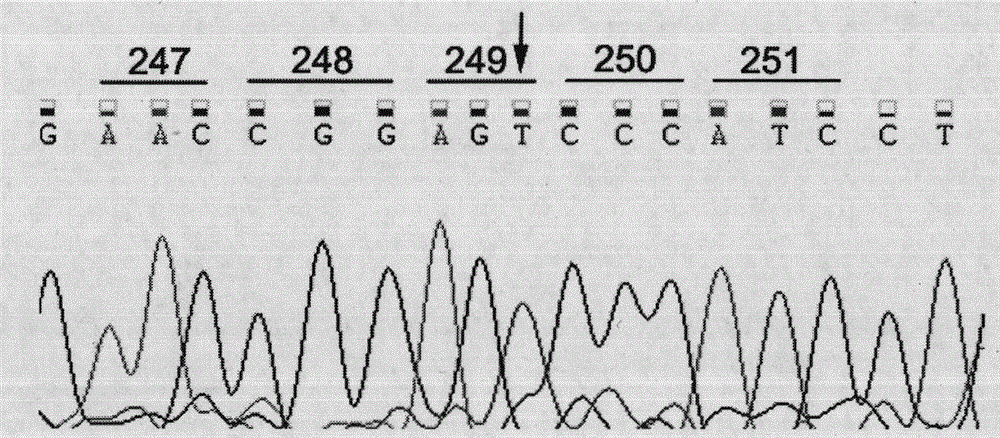Application of RRM2B gene or protein thereof in metastasis of hepatocellular carcinoma
A gene and protein technology, applied in the field of application of RRM2B gene or its protein in the diagnosis and treatment of liver cancer metastasis, can solve the problem of unclear mechanism of action and specific role
- Summary
- Abstract
- Description
- Claims
- Application Information
AI Technical Summary
Problems solved by technology
Method used
Image
Examples
Embodiment 1
[0251] Example 1 The expression level of RRM2B gene in hepatocellular carcinoma and the correlation between the expression level of RRM2B and intrahepatic metastasis of liver cancer patients were determined.
[0252] Firstly, the expression level of RRM2B protein in 236 liver cancer tissues was analyzed by immunohistochemical method, and it was found that the expression level of RRM2B protein in liver cancer was significantly lower than that in corresponding paracancerous tissues ( figure 1 A), in addition, the expression levels of RRM2B mRNA and protein in liver cancer tissues and paracancerous tissues were detected by quantitative PCR and Western blotting, and the results were consistent with the results of immunohistochemistry, that is, the expression of RRM2B mRNA and protein in liver cancer tissues was obvious lower than the corresponding paracancerous tissue ( figure 1 B and 1C). Therefore, these results indicate that the expression of RRM2B protein is reduced in liver ...
Embodiment 2
[0257] Example 2 Determination of inhibitory effect on migration, invasion and metastasis of RRM2B liver cancer cells
[0258] 2.1 In vitro experiments
[0259] Firstly, hepatoma cell lines were infected with lentivirus to establish stable RRM2B gene silencing and overexpression hepatocellular carcinoma cell lines. The results showed that RRM2B gene silencing could significantly promote the migration and invasion of SMMC-7721 and HCC-LY10 liver cancer cells ( figure 1 D); Conversely, RRM2B gene overexpression can inhibit the migration and invasion of SMMC-7721 and Huh7 cells ( figure 1 E).
[0260] 2.2 In vivo experiments
[0261] Liver orthotopic tumor transplantation experiments in nude mice demonstrated that RRM2B gene silencing promoted the ability of SMMC-7721 and HCC-LY10 liver cancer cells to metastasize in the liver and distant lung in nude mice ( figure 1 F).
[0262] Taken together, these results indicate that RRM2B can inhibit the migration, invasion and metast...
Embodiment 3
[0263] Example 3 The status of the p53 gene does not affect the relationship between the RRM2B gene and the metastasis of liver cancer cells
[0264] 3.1 Determination of the relationship between RRM2B expression and p53 in liver cancer cell lines with known p53 levels
[0265] Since RRM2B is the target gene of the wild-type p53 gene, whether the status of the p53 gene affects the effect of RRM2B on the metastasis of HCC cells was analyzed.
[0266] Because the status of the p53 gene of some liver cancer cell lines is known, for example, the p53 gene of the liver cancer cell lines MHCC-97L, MHCC-97H, MHCC-97, SNU-182 and other cell lines are mutant, like SMMC-7721 cells The p53 gene is wild type, and the p53 gene of Hep3B cells is deletion type. Therefore, the expression levels of p53 and RRM2B proteins in liver cancer cell lines were analyzed, and the results showed that the basal expression level of the basic RRM2B protein was not related to the status of the p53 gene ( f...
PUM
 Login to View More
Login to View More Abstract
Description
Claims
Application Information
 Login to View More
Login to View More - R&D
- Intellectual Property
- Life Sciences
- Materials
- Tech Scout
- Unparalleled Data Quality
- Higher Quality Content
- 60% Fewer Hallucinations
Browse by: Latest US Patents, China's latest patents, Technical Efficacy Thesaurus, Application Domain, Technology Topic, Popular Technical Reports.
© 2025 PatSnap. All rights reserved.Legal|Privacy policy|Modern Slavery Act Transparency Statement|Sitemap|About US| Contact US: help@patsnap.com



